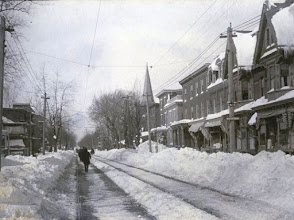Winter '19 / '20 - What Is the Polar Vortex and How Does It Influence Weather?
"However, there is some confusion in the media, general public, and even within the science community regarding what polar vortices are and how they are related to various weather events."
[...]
"... since surface weather disturbances are associated only with displacements of the vortex edge in limited areas rather than hemispheric-scale changes to the vortex, it is not clear ... invoking the term vortex clarifies anything, given ... the vortex is a hemispheric-scale structure.
"Use of the term without adequate explanation can suggest a more dramatic change to the global tropospheric circulation than has actually occurred (e.g., “The polar vortex is back!”)."
---
Learn more about the PV from the full article courtesy the Bulletin of the American Meteorological Society (BAMS) here.


































